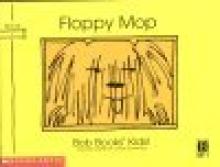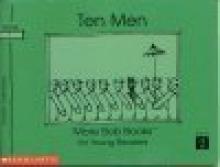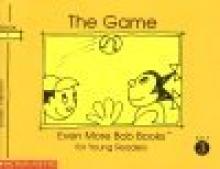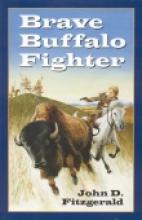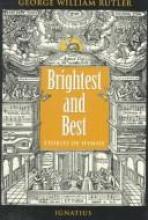No name
Bob Books Kids!
Formerly titled Bob Books Plus! I did not have this set when teaching my daughter to read, but have just started using it with my son (we picked it up at Sam's Club at a discount and thought it would be helpful for additional reading practice and confidence-building). The stories include practice of words ending in "y" and "ed" and the introduction of more two and three letter phonograms.
Set contains: 10 stapled softcover booklets of 16 pages each
Bob Books Pals!
Formerly titled More Bob Books This series provides practice lots of with two-letter consonant blends (such as "nt", "nd" and "dr"). Book six introduces words with long vowels ending with a silent "e". The books increase in number of pages and number of text lines on each page quite a bit as this particular set progresses. While using this series with my daughter, we started running through the phonogram cards (from The Writing Road to Reading) each day. I introduced (and explained) spelling rules as they came up in the stories from this set.
Set contains: 4 stapled softcover books of 16 pages and 4 of 24 pages
Bob Books Wow!
This set provides practice in words with long vowels ending in a silent "e" and phonograms with long vowel sounds (such as "oe", "ee", "ea", "ai"). While my daughter was working her way through this set of books, we continued drilling the phonogram cards each day (in a somewhat Montessori style) and discussed spelling rules as they came up in the stories. By the time we got to the later books in this set, Jacinta was anxious (and fairly able) to start reading other types of books. We skipped the final book in this set and began reading the Primer from the Catholic National Readers.
Formerly titled Even More Bob Books.
Set contains: 4 stapled softcover books of 16 pages and 4 of 24 pages
Boston Tea Party
One of the most famous events leading up to the American Revolution is often not well-understood. Even many history textbooks muddle or even mutilate the facts causing many people to think that those who dumped tea into Boston Harbor on that December night in 1773 were basically looting the ships because they were upset about taxes. The truth is more subtle and a lot more respectable than that and this is a fine book (with lovely pen and ink illustrations) to clear up all the confusion. From the "Adventures in Colonial America" series. 3rd grade and up.
Brave Buffalo Fighter
Brave New World
Brendan the Navigator
Bright Candles
Brightest and Best
This book consists of a fine selection of favorite hymns, including musical notation, and rather detailed stories about the authors of the text, the composers of the music, giving the student a good idea of how and when the music came about.
The author's purpose in writing the book "was to restore attention to some of the finest hymns, in the hope that they might replace the miserable afflictions that keep cropping up in ... 'missalettes'... It seemed to me that hymns might be better appreciated if we knew a little more about the stories behind them: first of all, who wrote them and in what circumstances." (From the Introduction).
Approximately 100 hymns are included. I'd like to note that the text of the hymns is often not the text that Americans today are most familiar with. There's a good reason for this. Over the years, the text of many hymns has been "simplified" which has often detracted from its meaning and significance. Fr. Rutler would like us to appreciate the songs as they were originally written.
What a wonderful Catholic resource for real music appreciation in the homeschool. What we give our children today in this realm may have a significant impact on turning back to more beautiful and reverent music in the future. Please note that there are some hymns that were not written by Catholics. Fr. Rutler explains in the introduction: "If the following selection of hymns joins to these great orthodox souls a Lutheran such as the war-ravaged Melchior Teschner ... this is testimony to the wonders God accomplishes through those who seek his goodness...some of these in their day wrote of doctrine more sturdily than [many of today's composers]."

